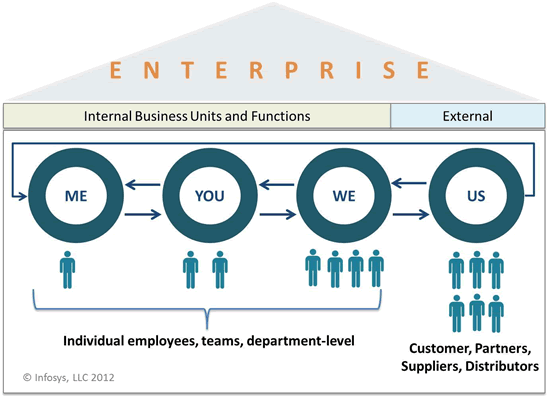We are warned. Gartner predicts 80% of social business efforts will not achieve intended benefits through 2015. There is a problem with that prediction and the perception it creates. In practice, social business is a huge Babylonian confusion. In order to know how to succeed, it’s essential to speak a common – business – language and to ask ourselves a few simple questions to start with.
The lack of speaking a common language within the enterprise, let alone within the global context, is always a reason for failure. Just look at other umbrella terms such as social media marketing or at the incapability within many organizations to properly measure across silos due to non-standardized metrics and Key Performance Indicators.
Here are three simple questions to start with:
– What is social business anyway?
– What benefits do we intend to achieve?
– How do we track success?
These basic questions are not asked often enough and we speak about social business as if everyone knows what it means or defines it the same way. Reality check: that’s a myth. In practice, there is a huge confusion and setting it straight is part of the answer how to avoid social business failure. The human dimension is key in succeeding: good old people, processes and purpose.
A Babylonian confusion called social business: avoid it
However, it shows why there is a lot of debate on the value and success potential of this umbrella term, social business. How can anyone agree in this Babylonian confusion.
Maybe it would indeed be better if we drop the term social business altogether, just as ‘social enterprise’, and talk more about digital business as that’s a term we can easily understand and dissect:
1. Using digital technologies to improve business functions.
2. The increasing digital dimension of the ways people consume, interact and whatnot.
Social business will only succeed if we look at it from the practical – human and team reality – perspective. Collaboration tools will not make your employees collaborate better.
Social business: cool, what’s in it for me?
Implementing social technologies throughout the enterprise will deliver zero results if the other two questions are not answered:
- What issues are we trying to solve or competitive advantages are we trying to achieve (the intended benefits).
- How will we make it happen and know if it works.
That last question is not just about processes. It’s about speaking the language customers, partners, employees and managers speak. No one wants to be collaborative or social if he doesn’t see what that means without the buzzwords, gets the benefits within his area of activity (why we should love pilot projects) and sees the WIIFM (What’s In It For Me). It probably isn’t an understatement if I say the WIIFM factor, involvement degree, human interaction part and overall people element are all crucial.

Social business – or whatever you want to call it – does not only require management buy-in. Social business requires organic and informed participant buy-in, based on tangible advantages. The proof of the pudding is in the eating and looking at what makes it get eaten and taste well for everyone is really not a matter of technology.
Then what is it? That’s for coming – more practical – contributions. However, speaking a common language is essential in it. And listening/understanding probably even more.
The tools and solutions are important if they make the processes and outcomes achievable. If we focus too much on them we’ll see happen exactly the same as we saw and still see in other technologies.
The number of businesses using marketing automation software just to send mails is huge. The percentage of companies using their analytics tools to the fullest – and acting upon resulting data – is really low. Just take a look at all the solutions you have bought, installed and underuse for more examples.
Failure is a choice and a certainty if you put hype and technology before processes and people. It’s no different in social business.

